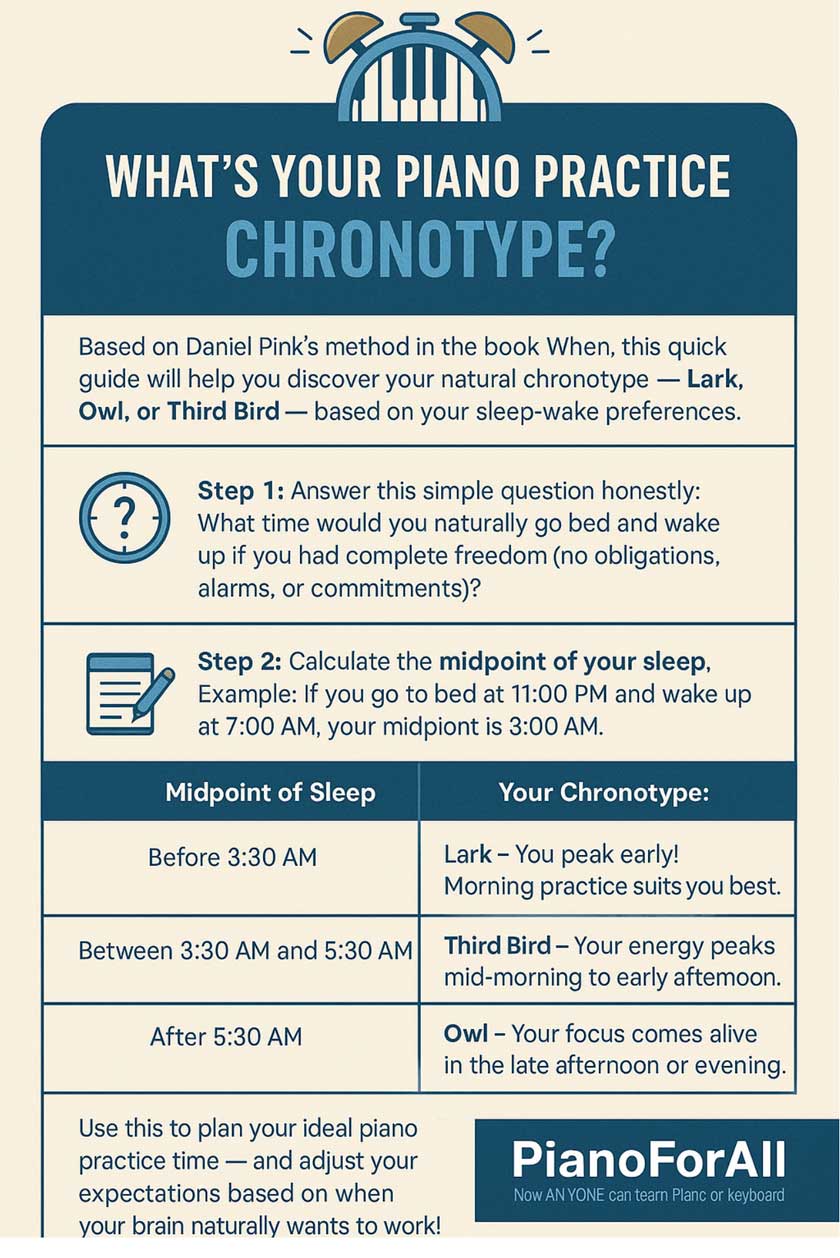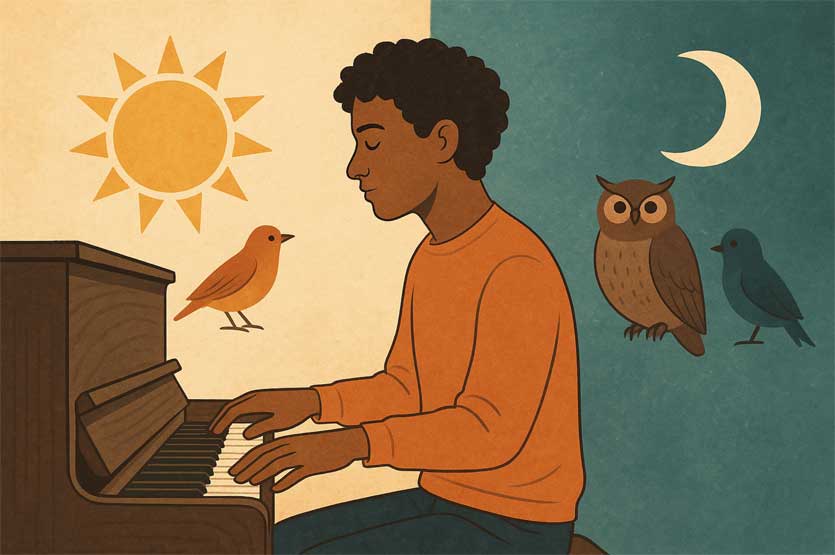Whether you’re a lark, an owl, or somewhere in between, knowing your body’s natural rhythm can help you make the most of every piano session.
If you’ve ever sat at your piano and thought, “Why is it so hard to focus right now?” — you’re not alone. The answer might not lie in motivation or discipline, but in something far more biological: your chronotype. Are you most alert in the early morning or come alive at night?
Understanding your internal clock is one of the most powerful (and overlooked) ways to improve piano learning, especially for beginners. This post will help you discover whether you’re a lark, an owl, or a third bird, and how to use that insight to optimize your practice routine and avoid frustration.
What is a Chronotype?
Are you a morning person? A lark, as it’s commonly called when we refer to different circadian rhythms. Or more of an owl, finding it difficult to put two thoughts together before the afternoon? Or maybe what Daniel Pink, in his book “When” calls the third bird – which is also the more common one.
Why Chronotype Matters for Piano Practice
Chronotypes refer to how your body’s circadian rhythm influences your peak performance and energy levels throughout the day. Understanding your chronotype can help you optimize your schedule for both peak productivity and well-being and it’s important to have in mind if you get the chance to schedule your piano practice with some freedom.
So, let’s have a look at it, assuming you’re a beginner learning piano (if you’re an advanced learner, creative areas of your brain will probably be more involved than the more cognitive way of processing information, so it will be different).
Lark
Larks are early risers who feel most energetic and focused in the morning. Given the chance, they tend to start their days early in the morning. They’re true defenders of the proverb “Early to bed and early to rise, makes a man healthy, wealthy and wise”. And maybe also “The early bird catches the worm”.
Are you a lark? In that case, practice in the early to mid-morning (and I’m crossing my fingers that you don’t live with a family of owls and wake them up!), because that’s when you are most focused and energized.
Owl
Owls are night people who feel most awake and productive in the late afternoon or evening, and prefer staying up and sleeping in late.
They might stand by another set of proverbs, of course! Something like “The moon whispers secrets only to those who venture into the shadows”.
So, you’re an owl! Practice in the late afternoon or evening, when your energy and concentration are at their peak.
Third birds
Maybe you resonate more with “The best path is the middle path” and you’re like most people, really, who don’t have a strong preference for mornings or late evenings.
So for those 65% of you who don’t favor the more extreme chronotypes, you’ll tend to feel at your peak in the late morning or early afternoon. Just be careful about how much you eat at lunchtime because no matter what kind of birds our chronotypes are we’re still humans who feel drowsy after a substantial midday meal.
And as is the case for everything in life, if you only have that window of time at a specific moment of the day to sit down at your piano or keyboard and practice… throw everything I’ve told you out the window and just go for it whenever you can, with your mindset focused on getting the most out of those moments and enjoy yourself along the way!
Want to find out about your piano practice chronotype?

And do share in the comments section. We’d love to see if it’s also true for Piano For All students to be more of Third birds than Larks or Owls. And to know if you noticed a difference in your learning when you adapted your practice schedule to your chronotype.
While you’re timing your practice, make sure the keyboard suits you: buying guide.



